Don't wanna be here? Send us removal request.
Text
Small Caravans: Ultimate Guide to Compact Adventure
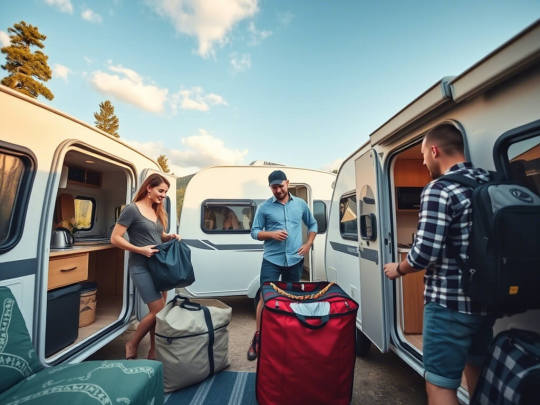
In Australia's vast landscapes where dirt roads lead to breathtaking destinations, small caravans have become the golden ticket to freedom for modern explorers. At Swag Off-Road Campers, we've perfected the art of compact caravanning, crafting hybrids and pop-tops that deliver big adventures in small packages.
Whether you're a couple chasing sunset coasts or a family creating memories, our guide reveals why downsizing your caravan might be the best travel decision you'll ever make.
Why Small Caravans Are Dominating Australian Roads
Recent data from the Caravan Industry Association of Australia shows:
62% of new caravan buyers now opt for models under 5.5m
Small caravan sales have grown 28% since 2020
78% of owners report more frequent trips with compact rigs
Fuel savings average $1,200/year versus large caravans
"Our customers love that they can explore 90% more locations without sacrificing comfort," says Mark Taylor, Design Engineer at Swag Off-Road Campers.
Swag's Small Caravan Range: Built for Australian Conditions
1. The Wanderer Series (4.2m - 5.1m)
Perfect for couples
Tare weight: 1,100-1,400kg
Key features:
Off-grid capability (7 days)
Full ensuite options
Heavy-duty independent suspension
2. Family Trekker (5.8m Hybrid)
Sleeps 2 adults + 3 kids
Convertible dinette beds
200L water capacity
270° awning with walls
3. Extreme Off-Road Models
350mm ground clearance
Reinforced chassis
Arctic pack for alpine trips
33" tyre compatibility
Explore our complete small caravan guide for detailed comparisons.
5 Compelling Reasons to Go Small
1. Access More Locations
Fit into standard campsites (6m rule)
Navigate narrow forest tracks
Park in regular car spaces
2. Tow With More Vehicles
Caravan Size
Minimum Tow Vehicle
<1,500kg
Mid-size SUV (Pajero)
1,500-2,000kg
Ute (Ranger)
>2,000kg
LandCruiser
3. Lower Running Costs
35% better fuel efficiency
Reduced maintenance
Lower insurance premiums
4. Easier Maneuverability
Stress-free reversing
Less sway in crosswinds
Simple storage at home
5. Faster Setup
Be camp-ready in 5 minutes
Less time leveling
Minimal unpacking
Small Caravan vs Tent vs Large Caravan
Feature
Small Caravan
Tent
Large Caravan
Setup Time
5-10 mins
30-60 mins
15-30 mins
Weather Protection
Excellent
Poor
Excellent
Off-Road Ability
Great
Good
Limited
Storage Needs
Small
Minimal
Large
Average Cost
$45k-$75k
$1k-$5k
$80k-$150k
Customization Options for Compact Living
Smart Storage Solutions
Under-bed compartments
Fold-out kitchen extensions
Ceiling-mounted racks
Power & Water
Lithium battery packages
160W solar standard
Water purification systems
Climate Control
Truma air conditioning
Diesel heating options
Thermal pack upgrades
Case Study: Retirees' 6-Month Outback Trip
Challenges:
Needed to cross the Simpson Desert
Limited towing experience
Space for 12-week supplies
Our Solution:
SWAG 4.8m Off-Road Hybrid
300L combined water
400Ah lithium system
Result:
Completed 18,000km trouble-free
Camped in 46 remote locations
Still using 5 years later
Maintenance Tips for Small Caravans
Monthly Checks
Tyre pressure/condition
Brake operation
Sealant integrity
Pre-Trip Musts
Bearings repacked
Gas system tested
Weight distribution checked
Long-Term Care
Regular chassis washes
Canvas treatment
Suspension lubrication
NRMA Maintenance Guide provides detailed checklists.
The Swag Difference: Built Tough Down Under
Why our caravans stand out:
Australian-made chassis - Corrosion-resistant
Military-grade canvas - 10-year warranty
Local component sourcing - Easy repairs
Owner-designed - By adventurers, for adventurers
Financing Your Small Caravan
Purchase Options
Outright (Save $3k-$5k with cash)
Caravan Loans (5-7 year terms)
Novated Lease (Salary packaging)
Depreciation Benefits
Immediate 15-20% write-off
GST credits for businesses
Potential 100% first-year deduction
Top 5 Small Caravan Mistakes to Avoid
Overloading - Stay under GVM
Wrong Tow Vehicle - Check payload
Poor Packing - Weight distribution matters
Skipping Demo - Test before buying
Cheap Accessories - Buy quality once
Where to Travel with Your Compact Caravan
Best NSW Routes
Darling River Run
Snowy Mountains High Country
South Coast Beaches
Bucket-List Trips
Cape York (May-Oct)
Gibb River Road (Dry season)
Tasmania's West Coast
The Future of Small Caravans
Emerging trends:
Solar breakthroughs (Flexible panels)
Lightweight materials (Carbon fibre)
Smart systems (App-controlled)
Modular designs (Custom layouts)
Why Choose Swag Off-Road Campers?
25 years building adventure rigs
Tested in extreme conditions
Nationwide dealer network
Australian-owned and made
Take the Next Step Toward Adventure
Ready to experience the freedom of compact caravanning? Download our comprehensive small caravan guide or visit a Swag dealer to tour models in person.
For more touring inspiration:
Explore Australia
Campervan & Motorhome Club
4WD Touring Australia
0 notes
Text
Cape York Adventures: Australia’s Final Frontier in Comfort
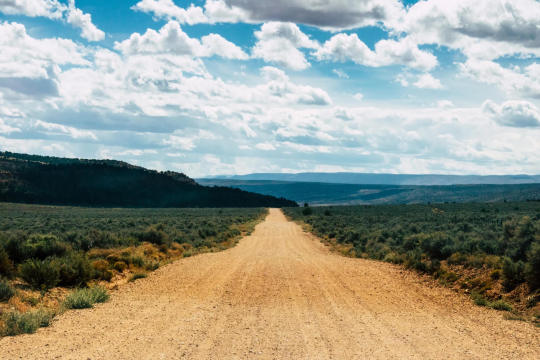
If you're dreaming of tackling one of Australia’s most iconic 4WD journeys, nothing compares to the excitement and challenge of Cape York adventures. From river crossings and red-dirt tracks to tropical rainforests and remote coastal escapes, Cape York is the ultimate playground for off-road explorers.
But to make the most of your journey to the northern tip of Queensland, having the right gear is essential — and that’s where Swag Off-Road Campers comes in. With their rugged, Australian-designed hybrid caravans and pop-top campers, Swag makes it easy to explore Cape York in comfort, safety, and style.
Why Cape York Is the Pinnacle of Off-Road Adventure
Cape York Peninsula is often described as Australia’s last frontier — and for good reason. Located more than 1,000 km north of Cairns, this remote, untamed landscape offers breathtaking views and a true sense of freedom. Popular highlights along the journey include:
Old Telegraph Track – A legendary 4WD route with challenging creek crossings
Fruit Bat Falls – A stunning natural swimming hole perfect for cooling off
The Tip of Australia – The northernmost point of mainland Australia
Jardine River Crossing – A famous ferry crossing that’s part of the adventure
Iron Range National Park – Home to rare wildlife and lush rainforest
Whether you're a seasoned overlander or planning your first major road trip, Cape York adventures offer something unforgettable at every turn.
Why Choose a Swag Off-Road Camper for Cape York?
Taking on Cape York isn’t your average weekend getaway — it demands toughness, reliability, and smart design. That’s why more Aussie adventurers are choosing Swag Off-Road Campers.
🛠 Built for the Rough Stuff
Swag’s range of hybrid caravans and pop-top campers are purpose-built for Australian terrain. With off-road suspension, reinforced chassis, and all-terrain tyres, they’re designed to handle the punishing conditions of Cape York’s backroads.
🛌 Comfort in the Wild
Long days on the road deserve restful nights. Swag campers feature comfortable bedding, indoor kitchens, slide-out fridges, and even ensuite options — all designed to bring a touch of luxury to your remote adventure.
🌧 Weather-Ready Design
Tropical downpours and high humidity are part of the Cape York experience. Swag campers are sealed, ventilated, and weatherproof, keeping you dry, cool, and comfortable in all conditions.
👨👩👧👦 Suitable for All Travellers
Swag offers a range of camper sizes and layouts to suit couples, families, or solo travellers. Whether you're looking for quick setup times or maximum storage, there's a model that fits your travel style.
Explore the Swag range today and find a dealer near you. It’s the first step toward your ultimate Cape York adventure.
Tips for Planning Your Cape York Adventure
Taking on Cape York requires planning and preparation. Here are some tips to help ensure a safe and enjoyable journey:
1. Time Your Trip Right
The dry season (May to October) is the best time to travel Cape York. Roads are generally passable, and the weather is ideal for exploring.
2. Know Your Route
Popular tracks like the Old Telegraph Track, Bamaga Road, and Frenchmans Track vary in difficulty. Research the conditions and choose routes suited to your vehicle and experience.
3. Pack Smart
Even with a Swag camper’s ample storage, packing efficiently is key. Bring essentials such as recovery gear, spare tyres, medical kits, and extra food and water.
4. Respect the Land
Cape York is home to Indigenous communities, protected wildlife, and fragile ecosystems. Travel responsibly and respect local cultures and the environment.
Explore Cape York Adventures with Swag Off-Road Campers
If you're ready to escape the city, get off the grid, and write your own adventure story, Cape York is calling. And there’s no better way to experience it than with the comfort and reliability of a Swag Off-Road Camper.
From hybrid designs that blend the best of caravans and campers to compact pop-tops that punch above their weight, Swag’s off-road lineup gives you the freedom to go further — and stay longer.
Find your perfect camper today and turn your Cape York adventure from dream to reality. Because with Swag Off-Road Campers, the journey is just as exciting as the destination.
0 notes
Text
The 5 Best Pet-Friendly Caravan Parks in Mackay
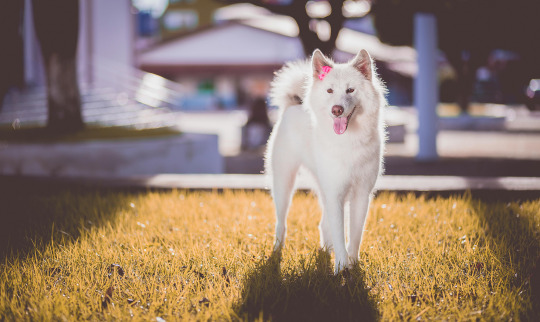
Mackay, nestled along Queensland’s scenic coastline, offers a plethora of caravan parks that warmly welcome both travelers and their furry companions. Whether you're seeking beachfront views, lush greenery, or family-friendly amenities, Mackay has something for every pet-loving adventurer. Here's a curated list of the top five pet-friendly caravan parks in the region:
1. Mycow Caravan Park – Bakers Creek
Located just 10 minutes south of Mackay's city center, Mycow Caravan Park is a haven for pet owners. The park boasts a dedicated off-leash dog exercise area, ensuring your canine companions have ample space to play. With a serene riverside setting, guests can enjoy fishing spots, a modern camp kitchen, and both powered and unpowered sites. The park's commitment to cleanliness and friendly staff make it a top choice for travelers with pets.
2. Discovery Parks – Mackay
Situated near the Mackay Marina and CBD, Discovery Parks offers a tropical oasis for families and their pets. The park features a splash park, swimming pool, mini-golf, and a bouncing pillow, ensuring entertainment for all ages. Pet-friendly cabins and sites are available, but it's advisable to confirm pet policies during booking. The park's proximity to beaches and rainforests adds to its allure.
3. Andergrove Van Park
Nestled in a tranquil setting, Andergrove Van Park spans 21 acres of manicured lawns, providing ample space for pets to roam. The park offers spacious sites, a shaded swimming pool, modern amenities, and a refurbished camp kitchen. While pets are welcome on tourist sites, they must be kept on a leash. The park's emphasis on cleanliness and friendly service makes it a favorite among travelers.
4. Bucasia Beachfront Caravan Resort
For those dreaming of beachside camping, Bucasia Beachfront Caravan Resort is an ideal choice. Located at the southern end of Bucasia Beach, the resort offers powered sites and is within walking distance of an off-leash dog exercise area. Guests can enjoy on-leash beach walks with their pets and take advantage of amenities like a swimming pool and camp kitchen. While some reviews mention the park could benefit from renovations, its prime location remains a significant draw.
5. BIG4 Mackay Blacks Beach Holiday Park
Situated along the shores of Blacks Beach, this BIG4 holiday park offers a range of accommodation options, from beachfront sites to cabins. While specific pet policies should be confirmed directly with the park, its spacious sites and proximity to the beach make it a potential spot for pet owners seeking a coastal retreat.
Tips for Traveling with Pets in Mackay:
Leash and Clean-Up: Always keep your pets on a leash within the park premises and clean up after them to maintain a pleasant environment for all guests.
Check Pet Policies: While these parks are pet-friendly, it's essential to confirm specific pet policies, restrictions, and any additional fees during booking.
Health and Safety: Ensure your pet's vaccinations are up-to-date and carry a first-aid kit tailored for pets.
Local Vet Services: Familiarize yourself with nearby veterinary clinics in case of emergencies.
Embarking on a caravan adventure in Mackay with your pet can be a delightful experience. With the right preparation and by choosing the right accommodation, you and your furry friend can enjoy the natural beauty and hospitality that Mackay has to offer.
0 notes
Text
Wheel Alignments: Essential for Vehicle Safety and Performance
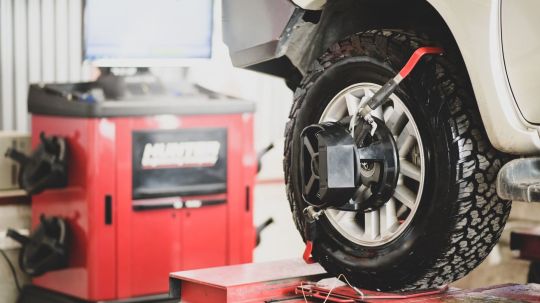
When it comes to vehicle maintenance, many car owners focus on oil changes, brake checks, and tyre pressure—but wheel alignments are often overlooked. However, regular wheel alignments play a critical role in your vehicle’s performance, safety, and even fuel efficiency. Whether you're noticing uneven tyre wear or your steering feels off, understanding the importance of proper wheel alignment can save you money and prevent bigger issues down the road.
In this article, we’ll explore what wheel alignments are, why they matter, how to tell if your vehicle needs one, and how often you should schedule them.
What Are Wheel Alignments?
Wheel alignment refers to the adjustment of a vehicle’s suspension—the system that connects a vehicle to its wheels. It’s not an adjustment of the tyres or wheels themselves, but rather the angles at which the tyres make contact with the road.
The key components involved in a wheel alignment include:
Camber: The inward or outward angle of the tyre when viewed from the front.
Toe: The extent to which your tyres turn inward or outward when viewed from above.
Caster: The angle of your steering axis when viewed from the side of the vehicle.
Proper wheel alignment ensures that your tyres wear evenly and your vehicle drives straight without pulling to one side.
Benefits of Regular Wheel Alignments
1. Improved Tyre Longevity
Misaligned wheels can cause tyres to wear unevenly or prematurely. Regular wheel alignments ensure that tyre wear is even, helping you get the most out of your tyres and saving you from frequent replacements.
2. Enhanced Fuel Efficiency
When your wheels are not aligned properly, your car has to work harder to move forward. This increases rolling resistance and fuel consumption. Aligning your wheels optimises the vehicle’s efficiency, reducing unnecessary fuel costs.
3. Better Handling and Safety
If your vehicle pulls to one side or the steering wheel is off-centre, it can be difficult to maintain control—especially in emergencies. Wheel alignments ensure your car handles properly, enhancing overall driving safety.
4. Lower Suspension and Steering Repairs
A misaligned vehicle can put extra strain on suspension and steering components. Over time, this can lead to expensive repairs. Getting regular wheel alignments helps prevent wear and tear on these critical systems.
Signs You Need a Wheel Alignment
Not sure if your car needs an alignment? Here are the most common signs to watch for:
Vehicle pulls to one side while driving straight
Uneven or rapid tyre wear
Steering wheel is off-centre when driving straight
Vibration in the steering wheel
Squealing tyres
If you notice any of these issues, it’s time to schedule a professional wheel alignment.
How Often Should You Get a Wheel Alignment?
While there’s no one-size-fits-all rule, most experts recommend checking your wheel alignment every 10,000 km or at least once a year. However, certain conditions can accelerate misalignment, including:
Hitting potholes or curbs
Off-road driving
Minor car accidents
Suspension repairs
If you regularly drive in rough conditions or have recently replaced your tyres, it’s a good idea to request an alignment check.
Wheel Alignments vs. Wheel Balancing
It’s important to note that wheel alignments and wheel balancing are two different services, although both are crucial for smooth driving.
Wheel alignment adjusts the angles of your tyres for optimal contact with the road.
Wheel balancing ensures that the weight of the tyre and wheel is evenly distributed.
Both services help with ride comfort and tyre longevity, and they’re often performed together during a tyre service appointment.
Professional Wheel Alignment Services
When choosing a mechanic or tyre specialist for your wheel alignment, look for a provider with computerised alignment technology and experienced technicians. Precision is key, and modern alignment machines can accurately measure and adjust to manufacturer specifications.
Many workshops also offer alignment packages or bundle them with tyre rotations and inspections, making it more affordable and convenient to maintain your vehicle.
Final Thoughts
Wheel alignments are a small but vital part of your vehicle's ongoing maintenance. They ensure your tyres wear evenly, your car drives smoothly, and your fuel economy stays optimal. Ignoring wheel alignment can lead to costly repairs and unsafe driving conditions.
Whether you’re preparing for a long road trip or just want to extend the life of your tyres, scheduling regular wheel alignments should be part of your maintenance routine. Book a professional alignment service today and drive with confidence knowing your car is in peak condition.
0 notes
Text
Discover the Best Pet Friendly Caravan Parks for Your Next Holiday
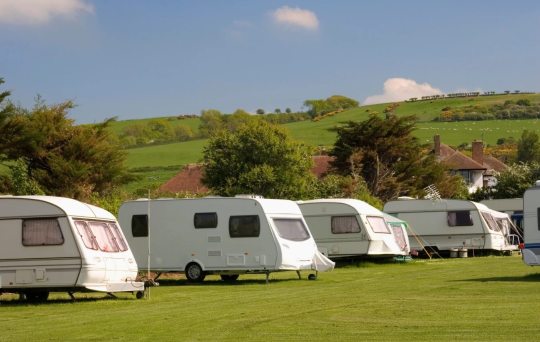
For many Australians, a holiday just isn't complete without their furry companions. Whether you're travelling along the coast or exploring the outback, finding pet friendly caravan parks ensures that every member of your family – including the four-legged ones – can come along for the adventure. In recent years, more and more caravan parks across Australia have embraced pet-friendly policies, making it easier than ever to plan a holiday with your dog, cat, or even bird by your side.
In this article, we’ll explore the benefits of staying in pet friendly caravan parks, what to look for when booking, and tips for travelling with pets.
Why Choose Pet Friendly Caravan Parks?
The biggest advantage of staying in pet friendly caravan parks is the convenience of bringing your pet with you, rather than leaving them at a kennel or with a sitter. Here’s why travellers across Australia are choosing pet-friendly options:
1. Cost-Effective Travel
Kennel and boarding fees can quickly add up, especially for longer trips. Taking your pet with you not only saves money but also reduces stress for both you and your animal.
2. Reduce Pet Separation Anxiety
Pets are part of the family. Leaving them behind can lead to separation anxiety, especially in dogs. Having them close during your holiday helps them feel secure and happy.
3. Explore Nature Together
Many pet friendly caravan parks are located near walking trails, dog-friendly beaches, and national parks, offering endless opportunities for you and your pet to explore and enjoy nature together.
What to Look for in Pet Friendly Caravan Parks?
Not all caravan parks have the same rules or amenities when it comes to pets. When booking, consider the following:
1. Clear Pet Policies
Always check the park's pet policy. Some parks may have breed restrictions, leash rules, or limits on the number of pets allowed per site.
2. Designated Pet Areas
Look for parks that offer dog-friendly facilities such as dog runs, pet washing stations, or designated walking areas.
3. Pet-Safe Accommodation
Choose parks with safe, secure fencing and pet-friendly cabins or powered sites where your pet can rest comfortably and safely.
4. Nearby Attractions
Pick a location close to dog-friendly beaches, parks, and trails to get the most out of your stay.
Top Pet Friendly Caravan Parks in Australia
Australia is home to hundreds of pet friendly caravan parks, from coastal retreats to mountain escapes. Here are just a few popular picks:
1. BIG4 Holiday Parks
Many BIG4 locations across Australia welcome pets on campsites and even in selected cabins. These parks are well-known for their family-friendly atmosphere and excellent facilities.
2. NRMA Parks and Resorts
With a wide range of locations, NRMA offers pet friendly options at various sites, often with spacious grassy areas and access to nearby walking tracks.
3. Discovery Parks
Several Discovery Parks allow pets, especially in their powered and unpowered camping sites. Some even provide pet amenities such as bowls and treats.
Tips for Travelling with Pets
To make your trip to pet friendly caravan parks as smooth as possible, keep these tips in mind:
Prepare your pet: Make sure your pet is up to date on vaccinations and flea/tick prevention.
Pack the essentials: Bring along your pet’s bed, food, leash, toys, and water bowls.
Respect park rules: Always clean up after your pet, keep them on a leash when required, and be mindful of other guests.
Monitor your pet’s behaviour: Travel can be stressful for animals. Keep an eye on signs of distress and make sure they have a comfortable, shaded place to relax.
Check the weather: Make sure conditions are safe and comfortable for your pet, especially during the hotter months.
Why Pet Friendly Caravan Parks Are the Future of Travel
The demand for pet friendly caravan parks continues to rise as more travellers opt for road trips and domestic holidays. Parks that welcome pets aren’t just catering to a niche—they’re meeting the needs of thousands of families across the country. Whether you're exploring Queensland’s coastline or setting up camp in the Blue Mountains, pet-friendly parks offer flexibility, affordability, and unforgettable experiences for you and your beloved pet.
Final Thoughts
Travelling with pets doesn't have to be difficult. With the growing number of pet friendly caravan parks in Australia, you can enjoy your adventures without the worry of leaving your pet behind. By doing a bit of research and planning ahead, you’ll find the perfect destination that welcomes both you and your furry travel companion.
So pack your bags, grab the leash, and hit the road — the perfect pet-friendly holiday awaits!
0 notes
Text
Pet-Friendly Caravan Parks in Coffs Harbour: A Guide for Travellers with Pets
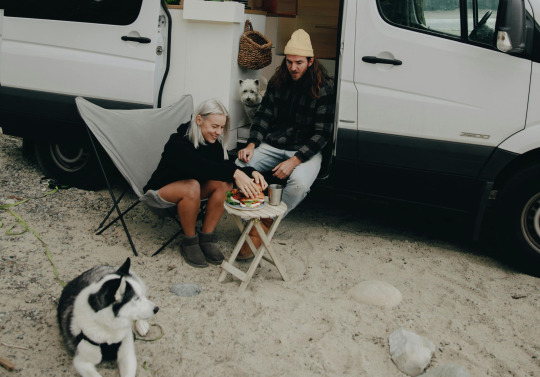
Coffs Harbour, known for its stunning beaches, lush hinterland, and family-friendly attractions, is a fantastic destination for travellers seeking adventure and relaxation. If you're planning a trip with your furry companion, finding the right pet-friendly caravan park is essential. Fortunately, Coffs Harbour offers several excellent options that cater to both you and your pet. Here’s a guide to the best pet-friendly caravan parks in the area.
1. BIG4 Sawtell Beach Holiday Park
Located just south of Coffs Harbour in the charming village of Sawtell, this holiday park welcomes pets on designated sites. With direct access to the beach and plenty of walking trails nearby, it’s an excellent spot for you and your pet to enjoy the outdoors. Ensure you check ahead for pet-friendly site availability and specific rules regarding pet stays.
2. Reflections Holiday Parks Coffs Harbour
Situated close to the Coffs Harbour Jetty, this park offers a range of pet-friendly sites for travellers with caravans and motorhomes. The park’s location provides easy access to dog-friendly beaches and scenic walking tracks, making it an ideal spot for active pet owners.
3. Park Beach Holiday Park
A popular choice among travellers, Park Beach Holiday Park allows pets on designated sites outside peak seasons. The park features spacious grassy areas and is close to Park Beach, where you can enjoy a stroll with your four-legged friend.
4. North Coast Holiday Parks Moonee Beach
Located just 15 minutes north of Coffs Harbour, Moonee Beach Holiday Park is a peaceful and pet-friendly escape. The park is near Moonee Beach Nature Reserve, providing ample space for dogs to explore. Pets are permitted on selected sites, so it’s recommended to book in advance.
5. Woolgoolga Lakeside Holiday Park
For those who prefer a quieter atmosphere, Woolgoolga Lakeside Holiday Park is a fantastic choice. This park allows pets on selected sites and offers easy access to pet-friendly beaches and walking trails in the Woolgoolga area.
Tips for Staying at Pet-Friendly Caravan Parks
Check the Park’s Pet Policy – Some parks have seasonal restrictions, breed limitations, or designated pet-friendly areas.
Keep Your Pet on a Leash – Many parks require pets to be leashed in communal areas.
Clean Up After Your Pet – Always carry waste bags and dispose of them properly.
Be Considerate of Other Guests – Ensure your pet is well-behaved and does not disturb other travellers.
0 notes
Text
Pet-Friendly Caravan Parks in Coffs Harbour
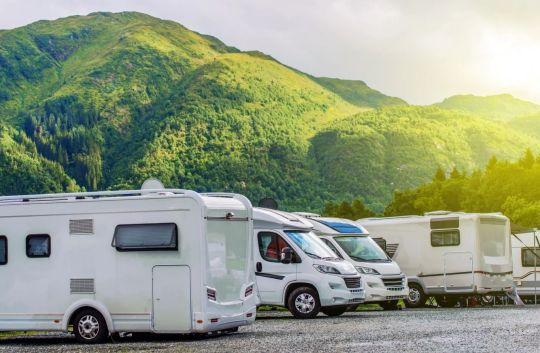
Are you planning a trip to Coffs Harbour and want to bring your furry friend along? Finding pet-friendly caravan parks can make your travel experience more enjoyable and stress-free. In this guide, we’ll explore the best pet-friendly caravan parks in Coffs Harbour, ensuring a perfect stay for both you and your beloved pet.
Why Choose a Pet-Friendly Caravan Park in Coffs Harbour?
Coffs Harbour is a stunning coastal destination, known for its beautiful beaches, lush rainforests, and family-friendly attractions. With plenty of open spaces and pet-friendly activities, it’s the perfect location for a holiday with your pet.
Top Pet-Friendly Caravan Parks in Coffs Harbour
1. Park Beach Holiday Park
Pet-friendly sites available on request
Close to dog-friendly beaches
Excellent facilities including a pool and BBQ areas
2. BIG4 Sawtell Beach Holiday Park
Welcomes pets in designated areas
Surrounded by nature reserves and walking tracks
Spacious sites for caravans and camping
3. North Coast Holiday Parks Coffs Harbour
Pet-friendly options for travelers
Close to local cafes and attractions
Ideal for long or short stays
Pet-Friendly Activities in Coffs Harbour
When you’re not relaxing at your caravan park, take your pet for an adventure:
Boambee Beach: A popular off-leash beach for dogs to run and play.
Coffs Creek Walkway: A scenic trail perfect for a relaxing stroll with your pet.
Pet-Friendly Cafés: Many local cafés offer outdoor seating where pets are welcome.
Tips for Staying at a Pet-Friendly Caravan Park
Book in Advance: Pet-friendly spots fill up quickly, so secure your site early.
Follow Park Rules: Always keep your pet on a leash and clean up after them.
Pack Essentials: Bring your pet’s bedding, food, and toys for a comfortable stay.
Plan Your Pet-Friendly Getaway Today!
Coffs Harbour offers an array of pet-friendly caravan parks and activities to ensure a memorable holiday for you and your furry friend. Start planning your trip today and experience the best that this coastal paradise has to offer!
0 notes
Text
Is It Worth Buying a Hail-Damaged Caravan?

If you're in the market for a caravan, you might come across listings for hail-damaged caravans at significantly lower prices than undamaged models. While the savings can be tempting, is buying a hail-damaged caravan really worth it? Let’s explore the pros, cons, and key factors to consider before making a decision.
Pros of Buying a Hail-Damaged Caravan
Lower Purchase Price
One of the biggest advantages of buying a hail-damaged caravan is the cost savings. These caravans are often sold at a steep discount, sometimes 30-50% cheaper than their non-damaged counterparts.
Potential for Repairs
If the damage is primarily cosmetic, such as dents on the roof or side panels, it may not affect the caravan’s functionality. In some cases, minor hail damage can be repaired relatively cheaply.
Insurance Write-Off Bargains
Some hail-damaged caravans are written off by insurance companies, but this doesn’t always mean they are beyond repair. Statutory write-offs cannot be re-registered, but repairable write-offs can be fixed and legally used again, often at a fraction of the cost of a new caravan.
Same Functionality at a Lower Cost
If you don’t mind the aesthetic imperfections, a hail-damaged caravan could provide all the same benefits as an undamaged one but at a much lower price.
Cons of Buying a Hail-Damaged Caravan
Structural Damage Risks
Not all hail damage is just cosmetic. Severe hail impacts can cause cracks in the roof, leaks, or even compromise the caravan’s insulation and water-tightness. These issues can lead to costly repairs.
Difficulties with Insurance & Resale
Many insurance companies hesitate to insure hail-damaged caravans, especially if they have been written off before. Additionally, resale value can be significantly lower, making it harder to sell in the future.
Hidden Costs
While the initial purchase price is lower, repair costs can add up quickly. Replacing damaged panels, fixing leaks, and repainting can sometimes negate the savings you initially made.
Limited Warranty & Dealer Support
Most dealers and manufacturers won’t offer warranties on hail-damaged caravans. This means you’re responsible for any future repairs, which could be expensive.
Key Factors to Consider Before Buying
If you’re considering a hail-damaged caravan, here are some important factors to check:
Extent of Damage – Is it just dents, or are there structural concerns?
Insurance Classification – Is it a repairable write-off, or a statutory write-off?
Repair Costs vs. Savings – Will the cost of repairs still make it a good deal?
Future Resale Value – Will you be able to sell it later if needed?
Leak Testing – Check for signs of water damage, as hail-damaged caravans are more prone to leaks.
Final Verdict: Is It Worth It?
A hail-damaged caravan can be a great deal if the damage is purely cosmetic and the price is significantly lower. However, if there are structural issues, water leaks, or difficulties with insurance, the long-term costs may outweigh the initial savings.
Before purchasing, always inspect the caravan thoroughly or hire a professional to assess the damage. If you’re willing to invest in repairs and don’t mind minor aesthetic imperfections, a hail-damaged caravan could be a budget-friendly option for your next adventure.
Thinking about buying a hail-damaged caravan? Do your research, weigh the costs, and make an informed decision!
0 notes
Text
Essential Guide to Extended Mirrors for Caravans
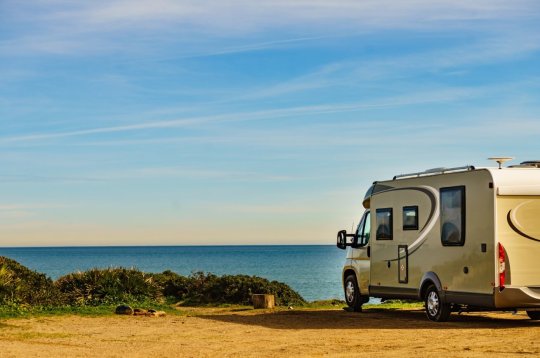
Towing a caravan is a gateway to adventure, but it comes with its challenges—like ensuring clear visibility of the road behind you. This is where extended mirrors for caravans come into play. These handy tools provide a safer, more stress-free towing experience. Here’s everything you need to know about choosing, using, and maintaining extended mirrors for your caravan.
Why Are Extended Mirrors Important for Towing?
Standard vehicle mirrors often fail to provide the visibility needed when towing a wide or long caravan. Extended mirrors:
Improve Visibility: Allow a clear view of the sides and rear of your caravan.
Enhance Safety: Help you monitor traffic and make lane changes confidently.
Meet Legal Requirements: In many regions, using extended mirrors while towing is a legal necessity to avoid fines.
Types of Extended Mirrors for Caravans
There’s a wide variety of towing mirrors to suit different vehicles and towing setups:
1. Clip-On Mirrors:
Attach directly to your vehicle's existing mirrors.
Affordable and easy to install.
Ideal for occasional use.
2. Door-Mounted Mirrors:
Attach to the door, offering a more stable view.
Suitable for larger caravans or frequent travelers.
3. Replacement Mirrors:
Fully replace your existing mirrors with extended versions.
Provide a sleek, integrated look.
Best for regular caravan users.
Features to Look for in Extended Mirrors
When selecting extended mirrors, consider the following features:
Adjustability: Ensure they are easily adjustable for optimal visibility.
Durability: Opt for sturdy materials that can withstand harsh weather and vibrations.
Ease of Installation: Choose mirrors that are quick to fit and remove.
Vibration Reduction: Models with anti-vibration features offer a clearer view.
How to Install Extended Mirrors
Installing extended mirrors is straightforward with these steps:
Attach the mirrors securely to your existing side mirrors or doors.
Adjust the angle to ensure you can see the full length of your caravan.
Double-check stability to avoid movement or vibrations while driving.
Maintaining Your Extended Mirrors
Regular Cleaning: Keep the mirrors free of dirt and debris for optimal visibility.
Check for Damage: Inspect attachments and surfaces to ensure they’re in good condition.
Tighten Fittings: Periodically check that all fittings are secure, especially after long trips.
Benefits of Using Extended Mirrors
Safer Driving: Better visibility reduces blind spots and enhances maneuvering.
Legal Compliance: Avoid fines by meeting visibility requirements.
Peace of Mind: Drive confidently knowing you have a clear view of your caravan and surrounding traffic.
Find the Perfect Extended Mirrors for Your Caravan Today!
Ready to upgrade your towing experience? Explore a range of high-quality extended mirrors designed for safety, durability, and ease of use. Make every journey with your caravan safer and more enjoyable with the right tools.
0 notes
Text
Caravan Towing Weights & Limits: Essential Information
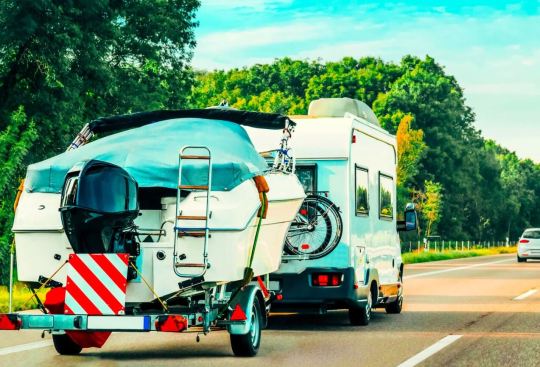
Understanding caravan towing weights and limits is crucial for a safe and legal towing experience in Australia. Exceeding weight limits can compromise safety, reduce vehicle control, and result in fines or insurance issues. Here, we break down the key terms, laws, and tips to ensure your caravan towing adheres to regulations and keeps you safe on the road.
Key Terms to Know: Caravan Towing Weights and Limits
1. Tare Mass: This is the empty weight of the caravan without any belongings, fuel, water, or passengers. It includes factory-installed accessories but not personal additions.
2. Aggregate Trailer Mass (ATM): The ATM is the maximum weight your caravan can handle when fully loaded. This includes everything inside the caravan, such as luggage, water, gas, and any accessories. The ATM rating is usually listed on the caravan’s compliance plate.
3. Gross Trailer Mass (GTM): The GTM represents the weight of the fully loaded caravan when it’s attached to the towing vehicle. Unlike ATM, the GTM does not include the weight applied to the tow ball.
4. Tow Ball Download (TBD): This is the downward force that the caravan applies to the tow ball of the vehicle. Tow ball download limits vary depending on the towing vehicle’s design and capacity.
5. Gross Combination Mass (GCM): The GCM is the combined weight of the fully loaded towing vehicle and caravan. This limit is set by the vehicle manufacturer and should never be exceeded.
6. Gross Vehicle Mass (GVM): The GVM is the maximum permissible weight of the towing vehicle alone, including passengers, fuel, and accessories.
Why Towing Weights and Limits Matter
Towing within the correct weight limits is essential to ensure both safety and legality. Overloading can lead to several issues, including:
Reduced Braking Efficiency: Exceeding weight limits can strain braking systems, reducing their effectiveness and increasing stopping distances.
Decreased Stability and Control: Overloading affects how the caravan handles on the road, making it more susceptible to swaying or losing control in high winds or around sharp turns.
Insurance Complications: If you’re towing over the legal limits, insurance claims might be denied in the event of an accident.
Fines and Penalties: Exceeding the towing weight limits can result in fines, as Australian authorities enforce strict towing regulations for road safety.
How to Calculate Towing Limits for Your Caravan
To stay within legal and safe towing weights, it’s essential to know your vehicle’s specific towing capacities:
1. Check the Vehicle Manufacturer’s Guide: Consult your vehicle’s owner manual or compliance plate to identify the towing capacity, which indicates the maximum weight the vehicle can tow.
2. Calculate ATM and GTM: Weigh your caravan when it’s empty (Tare Mass) and then add your belongings to ensure you don’t exceed the Aggregate Trailer Mass (ATM) or the Gross Trailer Mass (GTM).
3. Weigh Your Fully Loaded Caravan: Take your caravan to a weighbridge once it’s fully loaded to get an accurate measurement and confirm you’re within limits.
4. Confirm Tow Ball Download: Ensure your caravan’s tow ball download falls within the acceptable range for your towing vehicle’s specifications.
Tips for Safe Caravan Towing
Pack Wisely: Position heavy items over the axle to help balance the load and prevent sway. Avoid placing heavy items at the rear, as this increases instability.
Distribute Weight Evenly: Even weight distribution improves handling and reduces sway. Secure loose items to prevent shifting while on the road.
Use a Weight Distribution Hitch (WDH): WDHs help balance the weight between your caravan and towing vehicle, improving stability and control.
Regularly Check Tire Pressure: Both your towing vehicle and caravan tires should be at their recommended pressure levels to maintain fuel efficiency, control, and safety.
Know Your Stopping Distances: Towing affects braking, so practice increased stopping distances, especially on busy roads or downhill areas.
Understanding Legal Towing Requirements in Australia
Each state and territory in Australia has laws governing towing capacities, so it’s essential to check the specific regulations for where you’ll be driving. However, some general rules include:
Tow Mirrors: If your caravan is wider than your vehicle, you’ll need extended mirrors to ensure you have adequate rear visibility.
Safety Chains: Your caravan must have safety chains to secure it to the towing vehicle, with specific requirements based on weight.
Trailer Brake Requirements: Trailers exceeding 750 kg GTM must have brakes fitted, and those over 2,000 kg require breakaway brakes that activate automatically if the trailer disconnects from the vehicle.
Understanding caravan towing weights and limits is fundamental for safe and compliant travel across Australia. Knowing terms like ATM, GTM, and GCM can help you manage loads effectively, avoid fines, and ensure you and others on the road remain safe. Always adhere to your vehicle’s towing limits, and consider professional advice or equipment upgrades if you’re new to towing. Safe towing not only protects your vehicle and caravan but also ensures you’re prepared for an enjoyable, stress-free trip.
0 notes
Text
Exploring the Best Camper Trailer Destinations in NSW
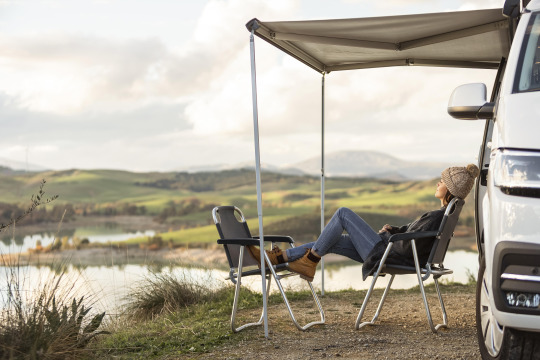
New South Wales (NSW), Australia, offers a myriad of stunning landscapes and diverse environments perfect for camper trailer enthusiasts. From lush coastal regions to rugged inland terrain, NSW has something to satisfy every adventurer's thirst for exploration. Here’s a guide to some of the best camper trailer destinations in NSW that promise unforgettable experiences.
Royal National Park
Located just south of Sydney, Royal National Park is a haven for nature lovers. It's one of the world's oldest national parks and offers a blend of coastal and bushland scenery. Campgrounds such as Bonnie Vale provide facilities for camper trailers and easy access to hiking trails, pristine beaches, and the picturesque Wattamolla Beach. Don’t miss the Figure Eight Pools, a natural wonder worth the hike.
Kosciuszko National Park
Home to Australia’s highest peak, Mount Kosciuszko, this national park is perfect for those looking to combine their camping trip with some serious hiking. The park's campgrounds, like Thredbo Diggings, are equipped to handle camper trailers and offer stunning alpine views. In winter, it transforms into a snowy wonderland ideal for skiing and snowboarding.
Blue Mountains National Park
The Blue Mountains, known for their dramatic cliffs, eucalyptus forests, and cascading waterfalls, are a must-visit. Sites like the Euroka Campground in Glenbrook provide excellent amenities for camper trailers. Explore iconic landmarks such as the Three Sisters, Wentworth Falls, and the Jenolan Caves. The region also offers various walking trails, catering to all levels of hiking enthusiasts.
Myall Lakes National Park
For those who love water activities, Myall Lakes National Park is the perfect destination. The park features one of the largest lake systems on the NSW coast, ideal for kayaking, boating, and fishing. Campgrounds like Mungo Brush offer waterfront sites, allowing easy access to the serene lakes and lush rainforests.
Byron Bay
Byron Bay is renowned for its laid-back vibe, beautiful beaches, and vibrant arts scene. Belongil Fields and First Sun Holiday Park are popular choices for camper trailer sites. Enjoy the local markets, surf the famous waves, or simply relax on the beach. The Cape Byron Lighthouse offers breathtaking views and is a great spot for whale watching during migration seasons.
Barrington Tops National Park
This World Heritage-listed area boasts ancient rainforests and subalpine woodlands. Campgrounds like Gloucester River offer basic facilities but immerse you in the park’s natural beauty. Barrington Tops is ideal for hiking, with trails leading to stunning lookouts and cascading waterfalls. It's also a fantastic spot for birdwatching and spotting wildlife.
South Coast – Jervis Bay
Jervis Bay is famous for its white sand beaches and crystal-clear waters. The region’s campgrounds, such as the ones in Booderee National Park, cater to camper trailers and provide a gateway to beautiful beaches like Hyams Beach. Snorkeling, diving, and dolphin watching are popular activities here, making it a great destination for families.
Mungo National Park
Step back in time with a visit to Mungo National Park, part of the Willandra Lakes Region World Heritage Area. The Walls of China, with their striking sand formations, are a highlight. Campgrounds like Main Camp offer basic amenities for camper trailers. This park is rich in Aboriginal history and offers guided tours to learn about its cultural significance.
Tips for Camper Trailer Travel in NSW
Plan Ahead: Some campgrounds require bookings in advance, especially during peak seasons.
Check Accessibility: Ensure your camper trailer can access the chosen site, as some roads might be challenging.
Pack Accordingly: NSW’s climate can vary greatly, so bring appropriate clothing and gear.
Respect Nature: Follow the “Leave No Trace” principles to preserve the natural beauty of these destinations.
1 note
·
View note